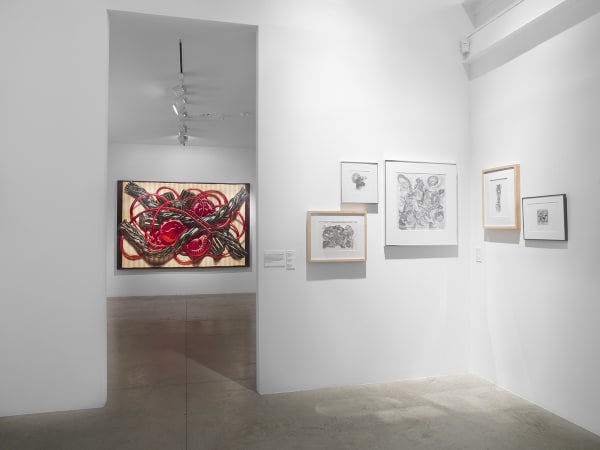NEW YORK, NY | albertz benda is pleased to present Kay Kurt: For All Her Innocent Airs, She Knew Exactly Where She Was Going on view January 12 to February 16, 2017. Kurt withdrew from the art world at the height of a fledgling career and has not shown in New York city since the 1980's. For All Her Innocent Airs, She Knew Exactly Where She Was Going re-examines the oeuvre of an artist whose early career in New York was ended prematurely and whose work is included in several of the world's premier institutional collections.
Kurt's first major large-scale painting entitled For All Their Innocent Airs, They Know Exactly Where They’re Going (1968) depicts an open box of candies in various shapes and pastel hues, which the artist chose based on the differing textures, colors, and lighting effects. The same year, Kurt began showing with the prestigious Kornblee Gallery in New York, where she would eventually have three solo shows.
The hyper-realistic renderings of candy and chocolates that came quickly to define her work led critics and the public to understand Kurt within the framework of the then-prevailing Pop art movement. Affirming this, Kurt was included in John Russell and Suzi Gablik's influential exhibition Pop Art Redefined at the Hayward Gallery in London in 1969.
Following early acclaim, Kurt participated in the 1973 Whitney Biennial and in 1980, had a solo exhibition at the Walker Art Center in Minneapolis, MN. Major museums, most notably the Corcoran Gallery of Art, Washington DC and the Whitney Museum, New York acquired her signature large-scale paintings and the Metropolitan Museum of Art counts one of her equally meticulous yet intimate drawings a part of its collection.
Compulsive and exacting to an extreme, Kurt can take years to complete a canvas. As the 1980s progressed, Kurt gradually found herself excluded from the New York art world where she had found acclaim for over a decade. Although never giving up on her painting practice, she almost completely withdrew from the public eye and it was not until her inclusion in the 2010 traveling exhibition, Seductive Subversion: Women Pop Artists, 1958-1968 presented at the Brooklyn Museum, that her work was re-introduced.
Revisiting Kurt’s oeuvre today reveals a painter whose embrace of mundane subject matter situates her among Pop art contemporaries, yet her work has defied easy categorization. Curator Sid Sachs, who organized the Seductive Subversion exhibition at the Rosenwald-Wolf Gallery of The University of the Arts, Philadelphia, explains:
“Kurt is perhaps more accurately described as a New Realist. She does not used mediated or advertising images like the Pop Artists nor photographs like the Photorealists. These paintings are developed through observation... Her candies are a given, much as Johns's alphabets or numbers. They structure her canvases abstractly and allow her to meditate on allusive content.”






